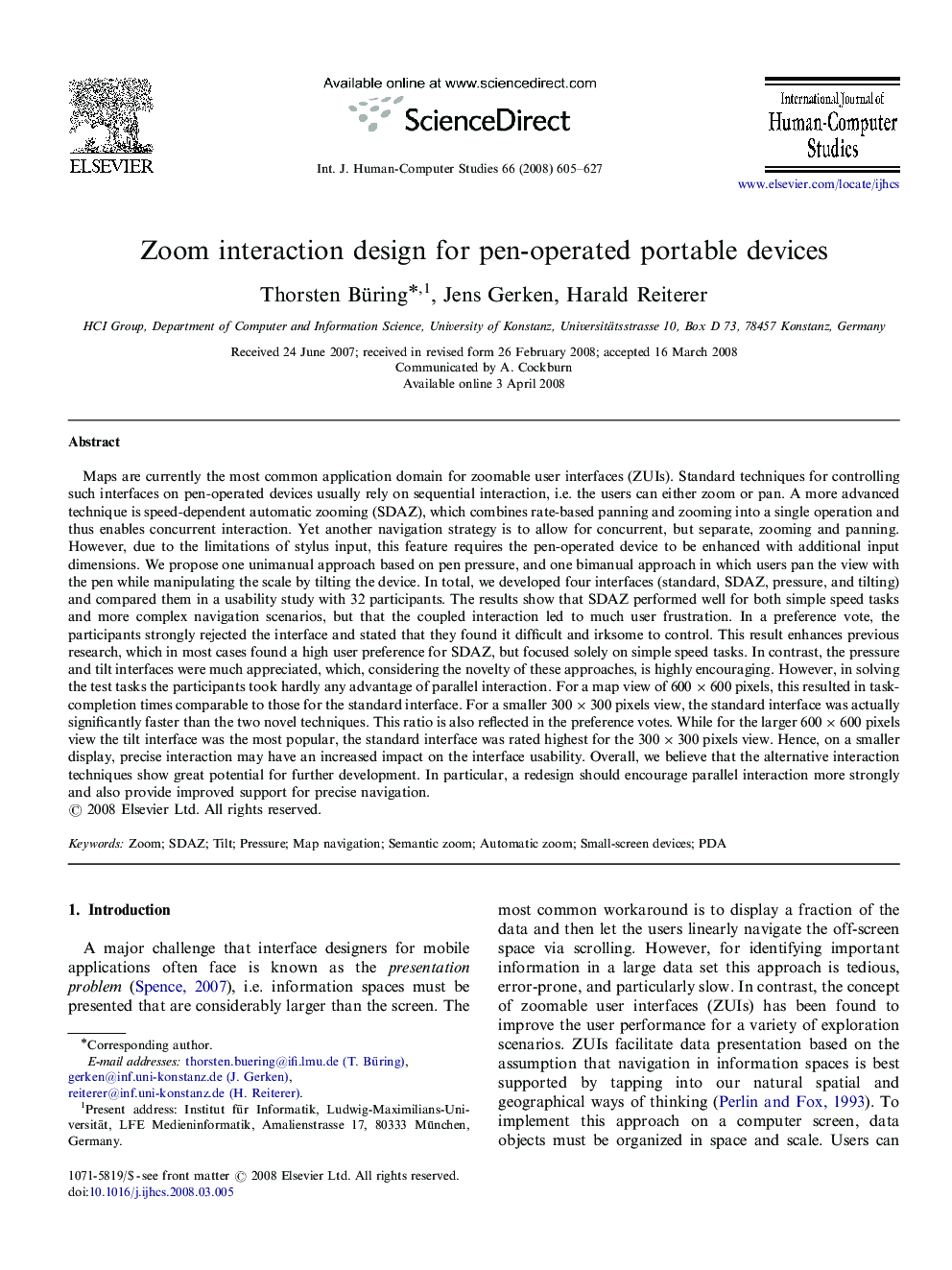| کد مقاله | کد نشریه | سال انتشار | مقاله انگلیسی | نسخه تمام متن |
|---|---|---|---|---|
| 401067 | 1439051 | 2008 | 23 صفحه PDF | دانلود رایگان |

Maps are currently the most common application domain for zoomable user interfaces (ZUIs). Standard techniques for controlling such interfaces on pen-operated devices usually rely on sequential interaction, i.e. the users can either zoom or pan. A more advanced technique is speed-dependent automatic zooming (SDAZ), which combines rate-based panning and zooming into a single operation and thus enables concurrent interaction. Yet another navigation strategy is to allow for concurrent, but separate, zooming and panning. However, due to the limitations of stylus input, this feature requires the pen-operated device to be enhanced with additional input dimensions. We propose one unimanual approach based on pen pressure, and one bimanual approach in which users pan the view with the pen while manipulating the scale by tilting the device. In total, we developed four interfaces (standard, SDAZ, pressure, and tilting) and compared them in a usability study with 32 participants. The results show that SDAZ performed well for both simple speed tasks and more complex navigation scenarios, but that the coupled interaction led to much user frustration. In a preference vote, the participants strongly rejected the interface and stated that they found it difficult and irksome to control. This result enhances previous research, which in most cases found a high user preference for SDAZ, but focused solely on simple speed tasks. In contrast, the pressure and tilt interfaces were much appreciated, which, considering the novelty of these approaches, is highly encouraging. However, in solving the test tasks the participants took hardly any advantage of parallel interaction. For a map view of 600×600600×600 pixels, this resulted in task-completion times comparable to those for the standard interface. For a smaller 300×300300×300 pixels view, the standard interface was actually significantly faster than the two novel techniques. This ratio is also reflected in the preference votes. While for the larger 600×600600×600 pixels view the tilt interface was the most popular, the standard interface was rated highest for the 300×300300×300 pixels view. Hence, on a smaller display, precise interaction may have an increased impact on the interface usability. Overall, we believe that the alternative interaction techniques show great potential for further development. In particular, a redesign should encourage parallel interaction more strongly and also provide improved support for precise navigation.
Journal: International Journal of Human-Computer Studies - Volume 66, Issue 8, August 2008, Pages 605–627